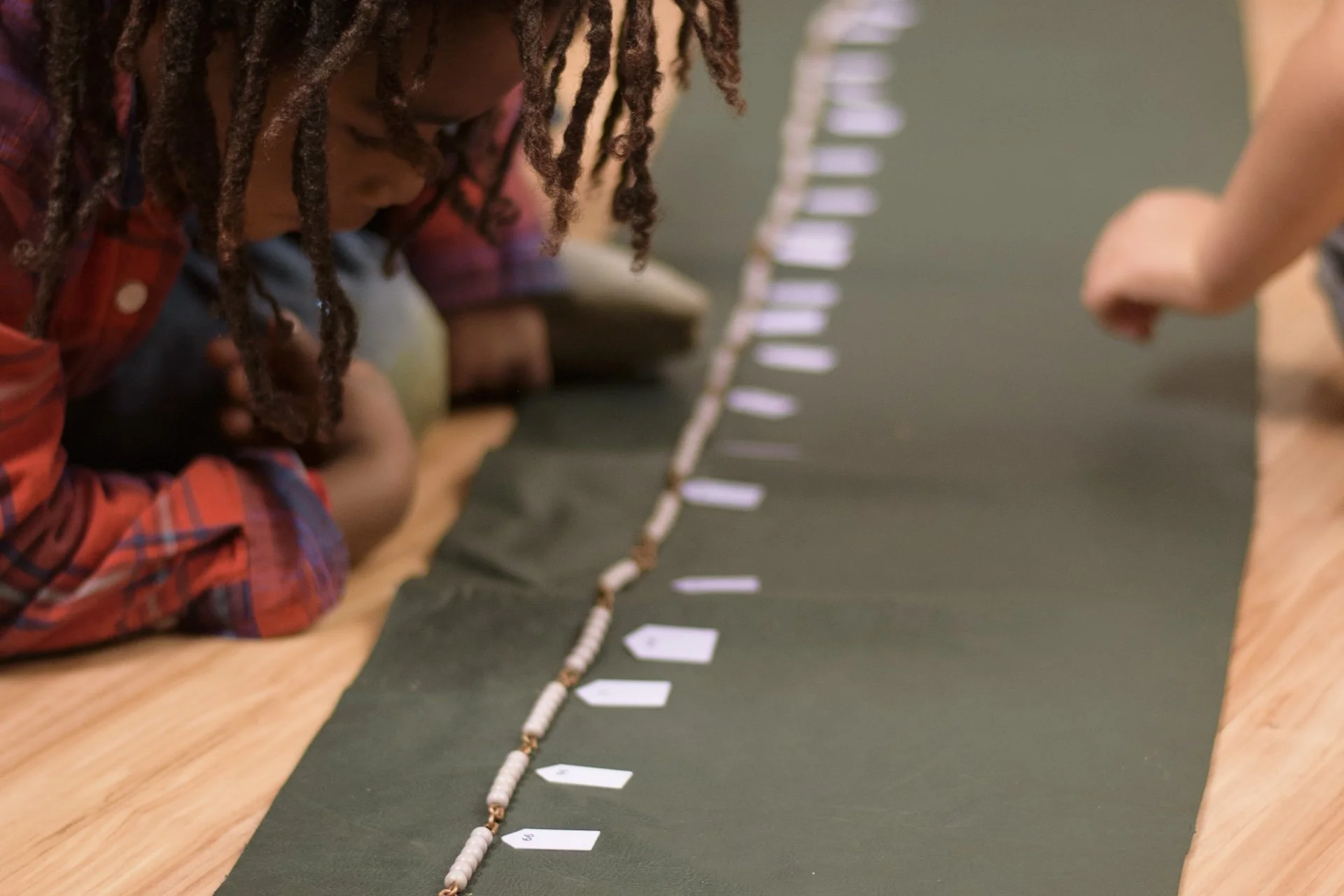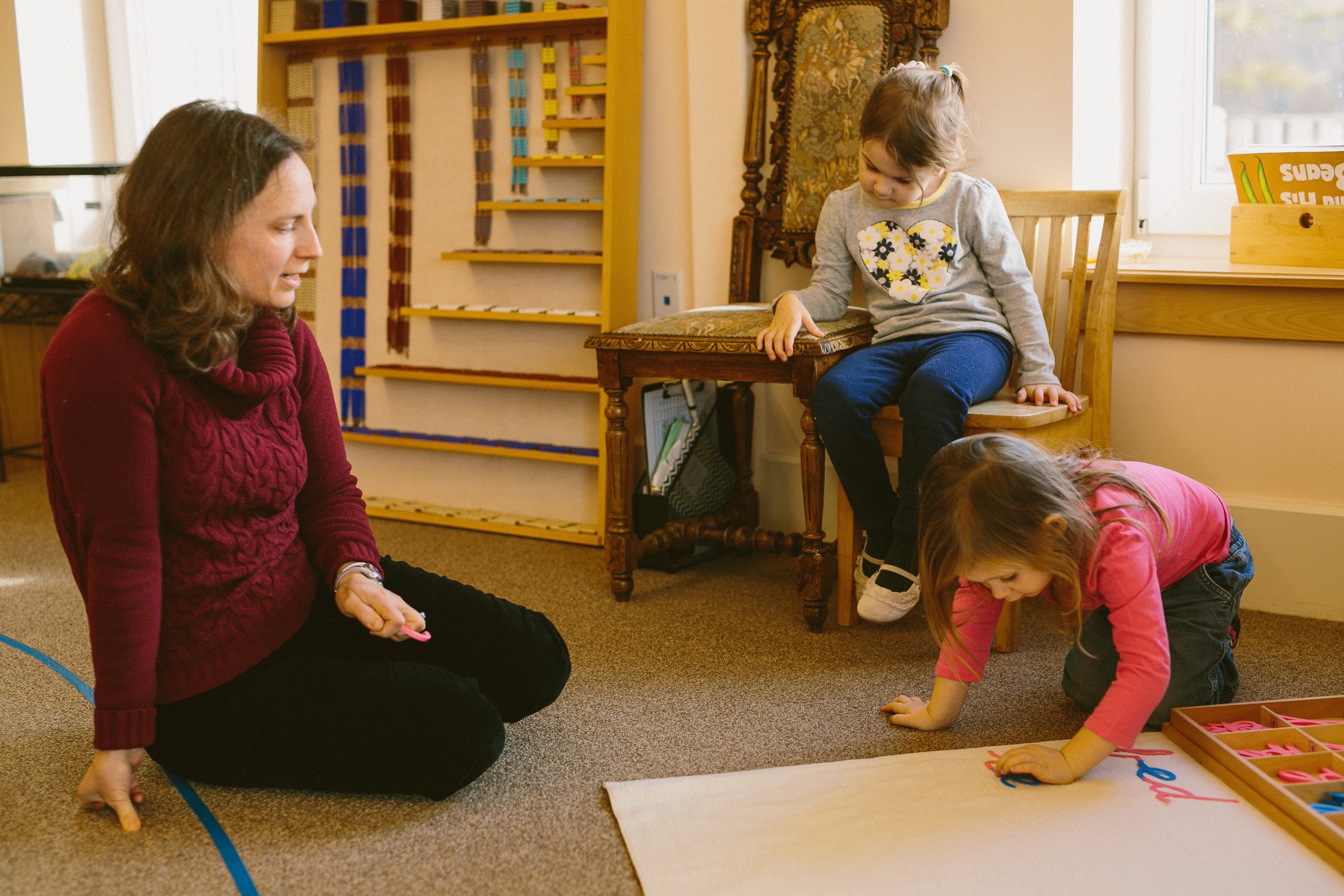Music. It helps us express ourselves. It expands our consciousness. It draws us together. Since ancient times, humans have relied upon music as a fundamental form of communication. Even today, we can see how children, from an early age, are drawn to music.
Always the scientist and observer, Dr. Maria Montessori recognized the essential place of music in children’s development. She collaborated with a number of musicians to develop a comprehensive music program to support children’s music appreciation and expression. The Montessori music program begins with sensorial experiences that build to children developing an acute awareness of pitch and rhythm. These experiences and activities then evolve into children learning the construction of musical scales and even perfecting how to write, read, and compose music. These components ultimately support children and adolescents’ abilities to use music as a form of self-expression.
Early Experiences
From our earliest moments of life, we absorb the sounds of our environment. A fetus hears the rhythm of the mother’s heartbeat, breathing, and body systems. Expecting parents may sing or tell a story and their unborn child takes in the patterning and intonations of their voices. Newborns use these sounds as a way to have points of reference while orienting to life outside of the womb.
When working with infants and toddlers, we slow down so as to observe and listen to sounds and movements in nature. Hearing and relating to the natural music around us helps us be better attuned to the music in everything. As adults, we model this reflective pace, especially in our fast-paced society.
In the process of learning through imitation, our youngest children try to mimic sounds, first by copying movements with their mouths and later with their bodies. Thus, we model connection to music and openness to learning and experiencing musical expression, both in the traditional sense and through experiences in nature. Because music moves us emotionally and calls forth varied feelings, we also show how to express these emotions by moving our bodies, dancing, and singing. Young children need to experience music so they can make it part of their human experience.
Musical instruments in our infant and toddler communities are often related to nature and the sounds of nature. We provide multiples of each instrument so that when singing songs together, everyone can have a rhythm stick, or other appropriate musical instruments, and keep the beat together. We offer different kinds of high-quality instruments because the sounds affect individuals in different ways. Like with any other material in a Montessori classroom, the adults present the appropriate use of each kind of instrument to the children.
When children get a little older and move into the Primary or Children’s House level, we offer four strands of music education: singing, rhythm, music appreciation, and music literacy.
Children’s House: Singing
Singing begins right away in the Children’s House! We are helping young children realize that their voice is an amazing instrument. We share and teach easy-to-learn songs, as well as model how to express a range of emotions through the musical experience of singing. Folk songs offer high-quality melodies and expressive lyrics, as well as topics that reflect real-world qualities and real-life experiences–from celebrations and holidays to the weather, geography, and just everyday life.
When we introduce songs in the Children’s House, we first sing without any accompaniment so that the children learn how to find the right pitch. Once the children know a song very well, we may complement the singing with a piano, guitar, dulcimer, or the classroom bells.
Children’s House: Rhythm
Young children are so adept at rhythm. From the very beginning, life inside the womb was a rhythmic wonderland, with the symphony of the mother’s heartbeat, digestion, and respiration. Continuing throughout their lives, children experience rhythm all around them. We support the development and refinement of rhythm through activities that involve walking, running, marching, and skipping on an ellipse on the classroom floor, as well as through percussive instruments and music with distinctive rhythmic patterns. We may introduce hand and foot movements during songs, as well as the use of rhythm instruments. Some children also begin rhythm notation while in the Children’s House.
Children’s House: Music Appreciation
Through recorded music selections, we offer the history and culture of different kinds of musical expression in the human experience. When introducing a new piece, we give its name, the name of the composer, and the type of music it represents. These lessons are correlated to what the child knows in history, geography, art, and current events. When musicians visit to play an instrument for the children, we expand the experience with related vocabulary, stories, and listening opportunities.
Children’s House: Music Literacy
Although most settings don’t introduce music literacy to young children, we offer it as we do writing–as a means for sounds to be saved and held. While improvised work is lost into the air, writing down notes saves the idea and allows the possibility of communicating without face-to-face contact.
In the Children’s House, the bells become the children’s second instrument. We begin music literacy as soon as children can pair the bells of the diatonic scale and when they show an interest in the names of the pitches.
To introduce music literacy skills, we isolate two difficulties: notation for melody and notation for pitch. These two pathways start separately in the Children’s House but are joined in the Montessori elementary program.
In addition to working with the tone bars to dive deeply into music notation, scales, and composition, children at the elementary level continue experiences with listening, music history and literature, playing instruments, singing, movement, and rhythm.
Elementary: Rhythm
In elementary, children start with a sensorial experience of four-beat measure patterns, and we soon introduce the notation for these four-beat patterns. Children begin to be able to read rhythmic patterns for familiar names (of people and items), which also prepares them for an understanding of syllabification. Through this work, they begin to be able to notate patterns that they hear and to find notation patterns in printed music. They also get to experience finding words that will fit different rhythmic patterns and can practice notating the rhythm of spoken words.
Elementary: Playing Instruments
We first use games to introduce elementary children to various instruments and then support them in using instruments to accompany class songs. As their expertise grows and they are able to maintain a steady beat, students may form a small band and can even learn how to have a conductor!
Whenever possible, we support children in seeing and hearing real orchestral instruments, including the music and instruments of other cultures. As children listen to individual instruments and combinations of instruments, they learn to differentiate between different qualities of sound that instruments create.
Elementary: Listening
We approach the art and skill of listening very deliberately. The adults set an example by listening to children and by speaking quietly and in clear sentences with precise pronunciation. Even in the elementary, we play listening games–from investigating how our bodies make noise, to taking listening walks, to enjoying mystery sound games, to exploring the absence of sound–all of which provide opportunities to focus on listening skills. The children also relish opportunities to listen to recorded music, both independently and as a group, and to be able to discuss what they heard.
Elementary: Tone Bars
The tone bars are elementary students’ primary musical instrument. Children in the elementary can often be found composing and playing on the tone bars and as they experiment with sounds and the relationships of the tone bars, they are essentially in the babbling stage of language development. With extended exposure and practice, this “babbling” can evolve into children being able to pick up tunes by ear.
Eventually, elementary students use the tone bars for learning major and minor scales, whole steps and half steps, transposition, the musical staff, music notation, composition, pitch dictation, degrees of the scale, intervals, sharps and flats, and key signatures.
Montessori Music Program
Montessori music begins sensorially, isolates difficulty, and engages children in spontaneous activity and meaningful self-expression. The Montessori music program is constructed so that the keys to music can be presented as a language of communication. We consider music to be an element of total literacy and thus give music as much emphasis as we give to mathematics and language as essential tools of communication. As a result, as children move toward adulthood, they are able to use musical expression as a way to better understand themselves and the world around them.
We invite you to come to visit our school to see (and hear) how music comes alive in our classrooms!






